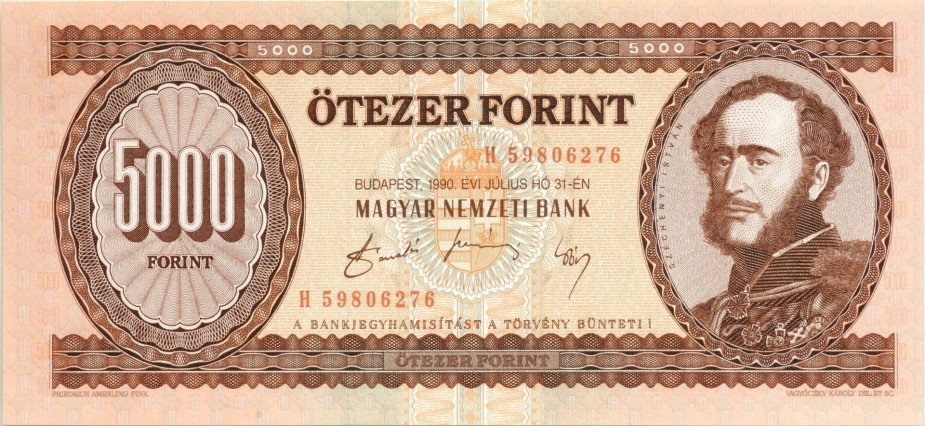
'The Worlds of Széchenyi - From the Private Man to the Reform Politician' is the title of a major new exhibition opening on the 14th of December 2023 at the Széchenyi István Memorial Museum in Nagycenk. The Money Museum will contribute to the exhibition with the long-term loan of 13 works of art.
The items on loan are experimental prints, banknotes and commemorative coins. The loaned commemorative coins, which were issued in memory of István Széchenyi, include the commemorative coins issued in 1991 and 2016, the 1948 Széchenyi 10 forint which is the middle member of the Táncsics series, which is among the earliest commemorative coins of the forint, will also be on display.
The 5000-forint coins on display all feature a portrait of Széchenyi based on a painting by Amerling, created by graphic artist Károly Vagyóczky. On the new denomination of 1990, Széchenyi's name was printed without the title of count, presumably as an effect of the previous decades, during which noble titles were not allowed to be displayed. On the reverse of the banknote is a picture of the Hungarian Academy of Sciences, a reference to the fact that Széchenyi donated one year’s worth of his income to the Academy in 1825.
When the new series of banknotes was being planned, it was clear that Széchenyi would be included on one of the denominations. The concept of the series was that the front pages would feature portraits of prominent figures from Hungarian history, while the reverse pages would show the place where the person on the front page worked or lived. Thus, for the first time on Hungarian money, rural locations were used: in the case of Széchenyi, the castle of Nagycenk.
While the portrait of the largest Hungarian had never been chosen to be featured on a circulation coin, in 1948 his portrait was placed on the highest denomination of the silver commemorative coin series. The 100th anniversary of the 1848-49 Revolution and War of Independence was a central event in public life at the time, and the decision was taken to issue a large number of the Petőfi-Táncsics-Széchenyi jubilee series. However, in the decades following the turnaround, during the socialist era of Hungary, Széchenyi was relegated to the background - in contrast to Kossuth, for example - and it was only in the years after the regime change that he began to be portrayed, quoted, and read again. In 1991, the bank issued a commemorative silver 500-forint coin. Since then, he has come back to the fore from time to time, one example being his appearance on the 20,000-forint commemorative coin of 2016.
Further news
All newsThank you for your kind understanding!
The success of the HUNOR Program is now on display in the exhibition space
The Tarnay family brought silver bowls
Thank you for your kind understanding!
Thank you for your kind understanding!
The success of the HUNOR Program is now on display in the exhibition space
The Tarnay family brought silver bowls
Thank you for your kind understanding!



